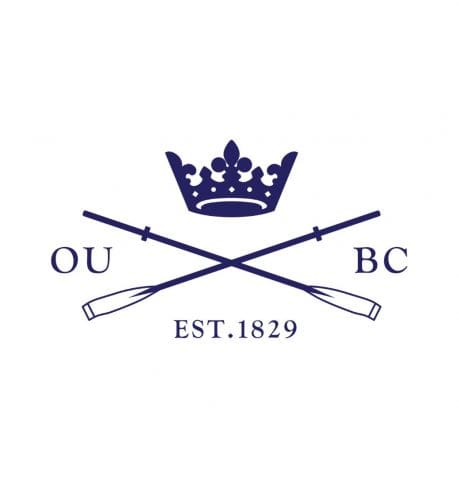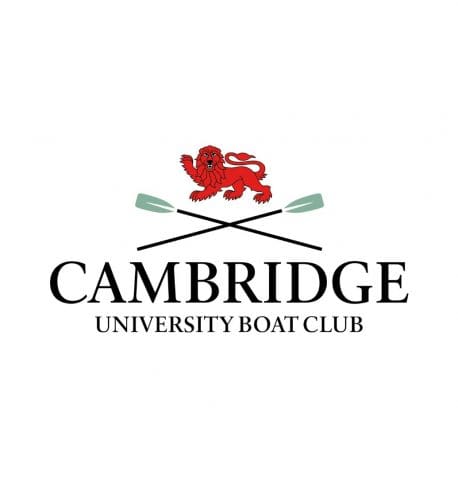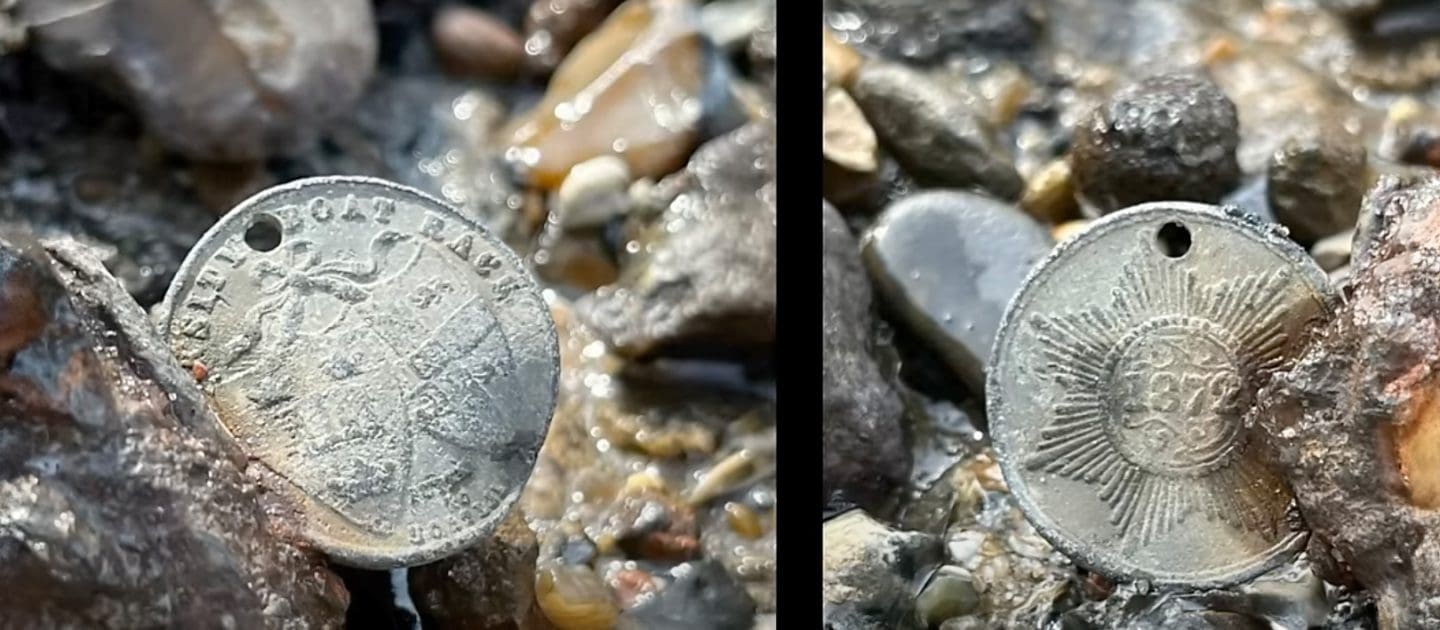Tim Koch of heartheboatsing.com looks at a recent treasure from the Thames.
Many people who are fans of The Boat Race may have no connection with either university or to the sport of rowing but follow the beloved 200-year-old British national institution because of a passion for the River Thames and also for history and heritage. In such cases, it is also possible that they also follow the many social media and YouTube sites dedicated to ‘mudlarking’, the searching of the Thames foreshore at low tide for items lost or discarded anytime within the last 1,000 plus years – from Roman coins to Victorian clay tobacco pipes to McDonald’s plastic toys.
One of the most high-profile licensed mudlarkers is Nicola White, who was recently on the Thames foreshore in Central London with her friend and fellow licensed mudlarker, Tom Chivers when he made a great discovery. It was a crudely made medallion with the coats of arms of Oxford and of Cambridge universities and the words, ‘University Boat Race’ and ‘Putney to Mortlake’ on one side, and the year ‘1872’ on the on the other. The 23mm pewter medal had been in the water long enough to infuse itself to a scrap of iron. Nicola’s video of the find is here (go to 9m 51s and 30m 37s).
The 1872 race was notable for several reasons: that it was the last race raced on fixed seats, before sliding seats took over. Is this akin to being the last person to serve underarm at Wimbledon? A newspaper report from the time described “The great University Boat-race took place on Saturday, in probably the worst weather ever experienced during the 29 contests of the oarsmen of Oxford and Cambridge for the laurels of victory on the Thames.” Cambridge, stroked by John Goldie in his fourth and final Boat Race, were victorious by 2 lengths.

I agree with Nicola that the medallion was a commercially produced souvenir with no official connection to the Boat Race, made to sell at a quick profit to the vast crowds on the riverbank on race day. I speculate that they would have been sold suspended from a dark blue or light blue ribbon so that they could easily be worn and the wearer’s support displayed.
Interestingly, I know of a medallion with exactly the same obverse but with the year ‘1872’ on the other side replaced by ‘UBR’ (‘University Boat Race’). This made commercial sense because unsold and undated medals could be offered again the next year ad infinitum.
Today, even when we can all easily watch the Boat Race via the BBC broadcast, a quarter-of-a-million people still line the banks from Putney to Mortlake to witness the action in person. In the past, free entertainment was scarce and Boat Race Day was London’s free day out and all social classes flocked to the river in even greater numbers than they do now. This attracted those looking to exploit large crowds in a holiday mood, many of whom may have been intoxicated.


This profiteering could range from the definitely illegal (gambling and pickpocketing) to the very dubious (Nicola mentions that the 1872 race was very rainy and there are records of opportunists in that year selling umbrellas for a shilling/5 pence, about a quarter of a labourer’s weekly wage) to the probably legal (selling medallions, rosettes and other ‘favours’ worn to show support of either Oxford or Cambridge).
I last saw a Boat Race Day rosette seller in the 1990s and this raises the question, why did Boat Race souvenirs identifying the wearer’s allegiance die out? I speculate that nowadays most people do not profess a favourite. In the past however, people and families with no Oxbridge or rowing connections were strong supporters of one university crew or the other for various random reasons. For example, the impoverished people of the East End of London were for the Light Blues because all the road signs in that part of the city pointed to Cambridge.
There have been worse reasons to support a sports team.
Please note: anyone searching the Thames foreshore needs permission from the Port of London Authority. Click here for more information.
Did you see the BBC report on this story? Click here to see this and other treasures recovered from the Thames by mudlarks.
Photo credit: Tom Chivers
Article Byline: Tim Koch



